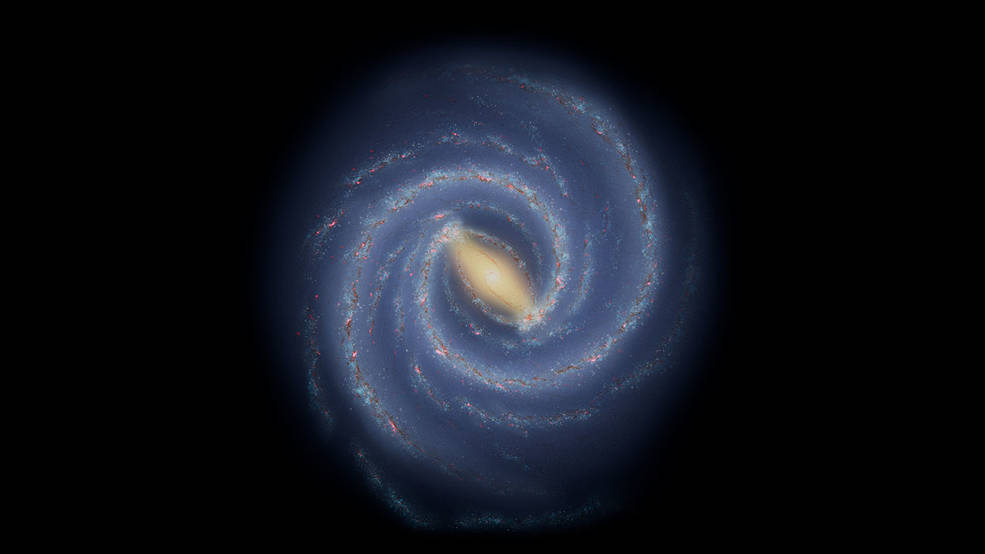The European Space Agency's Gaia spacecraft is preparing the most detailed map of the Milky Way. They're measuring the position and motion of 1.5 billion stars, and now researchers have found something interesting.
Some stars move in ways that can only be explained by the fact that they came from another galaxy. As it turns out, there may have been several collisions in our galaxy's past.
The merger of galaxies is a common phenomenon in the universe. A small percentage of galaxies in the nearby universe are actively merging.
The Milky Way has been cannibals 'recently'
This figure shows what astronomers currently know about the large-scale structure of the Milky Way. Illustration: NASA/JPL-Caltech
A few years ago, Gaia provided evidence that our galaxy ate a smaller galaxy between 8 and 11 billion years ago – and that object has now been swallowed, but was given a name regardless, thus becoming Gaia-Sausage-Enceladus, or just Gaia Enceladus. . .
The merger leaves behind ripples of stars that the research team calls galactic wrinkles, or wrinkles.
However, it appears that not all Gaia-Enceladus merger kinks are the same. This is what's new a job He claims some of them result from a much more recent merger, just three billion years ago.
“As we get older, we get more and more wrinkles, but our work shows that the opposite is true for the Milky Way. It's a kind of cosmic Benjamin Button that becomes less wrinkled over time,” said Thomas Donlon, lead author of the study.
“By looking at how these wrinkles dissipate over time, we can track when the Milky Way experienced its last major collapse. It turns out that it happened billions of years later than we thought.”
The stars give the answer
It's all about the movement of the stars. If a galaxy is being cannibalized by our own galaxy, it means it is coming into the Milky Way at high speed. The stars are scattered and mixed in with the native population of our galaxy, but they still have those high velocities.
Its influence on the galaxy is not constant, it fades away after a long time. So if we see that these effects, the wrinkles, are stronger from some stars and not from others, this suggests that there is a history of multiple and even recent mergers in the galaxy.
Co-author Heidi Jo Newberg added: “For stars to have as pronounced folds as they appear in the Gaia data, they could have joined us less than three billion years ago, at least five billion years later than previously thought.”
“New wrinkles form every time stars push back and forth across the center of the Milky Way. If they had joined us eight billion years ago, there would be so many folds next to each other that we wouldn't see them as separate features anymore.”
Gaia continues to provide new information about our home, helping astronomers understand the history of our galaxy.
Worth reading:












































